You’re experiencing a security breakthrough that’ll revolutionize wearable technology forever through ear biometrics’ unique anatomical advantages. Your ear structure remains unchanged from age 8 to 70, providing unmatched consistency that fingerprints and facial features can’t match. The concealed ear canal creates an impenetrable security barrier that’s nearly impossible to spoof, while seamless integration with smartwatches enables continuous passive authentication without interrupting your daily activities. Discover how this technology transforms everything you thought you knew about digital security.
Unique Anatomical Structure Makes Ears Perfect for Biometric Authentication
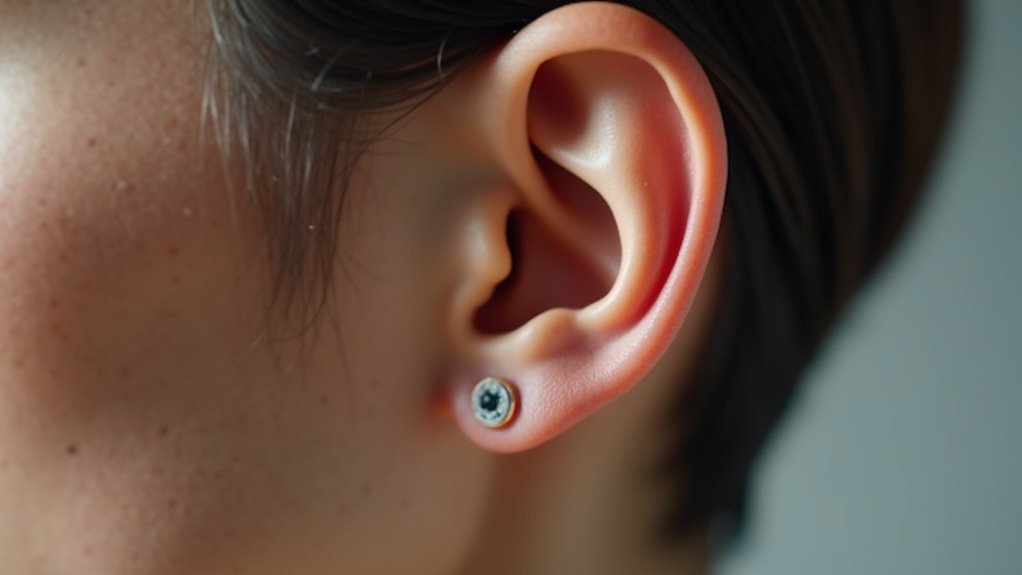
Your ears possess a remarkable combination of structural uniqueness and biological stability that makes them exceptionally well-suited for biometric authentication. Unlike fingerprints or facial features that can change over time, your ear structure remains consistent throughout most of your life, providing reliable identification markers. Each ear’s distinctive shape offers rich identifying features that biometric systems can capture and analyze effectively.
What sets ear biometrics apart is your ear canal’s hidden nature within your body. This concealed structure creates an inherent security advantage against spoofing attacks since it’s not visible to potential attackers. Ear acoustic authentication sends sound waves down your ear canal to map its unique shape, creating an additional layer of security.
You’ll find that modern smartphone cameras can easily capture detailed ear images, while the uniform color of your ear aids in pattern recognition and streamlined image processing for authentication systems.
Stable Ear Features Provide Unmatched Consistency Over Time
While other biometric traits deteriorate or change with age, your ear’s anatomical structure maintains remarkable consistency from childhood through your senior years. From age 8 to approximately 70, your ear’s shape and contour remain virtually unchanged, unaffected by facial expressions, weight fluctuations, or aging processes that compromise other biometric methods.
Your ear’s anatomical structure maintains remarkable consistency from age 8 to 70, remaining virtually unchanged unlike other biometric traits that deteriorate.
You’ll find fingerprint accuracy degrades from cuts, wear, and moisture, while facial recognition fails due to aging and expressions. Your ear structure doesn’t experience these limitations.
Unlike retinal scans requiring intrusive close-proximity scanning, ear biometrics capture images non-invasively through wearable devices. This stability means you won’t need frequent re-enrollment like other biometric systems.
Research validates this consistency, with deep learning achieving 98.93% segmentation accuracy across diverse populations, making ear biometrics ideal for long-term wearable security. Advanced models utilizing CNN architectures have demonstrated exceptional performance on comprehensive datasets, with some achieving testing accuracies exceeding 99% across thousands of ear images.
Enhanced Security Through Non-Replicable Biological Markers
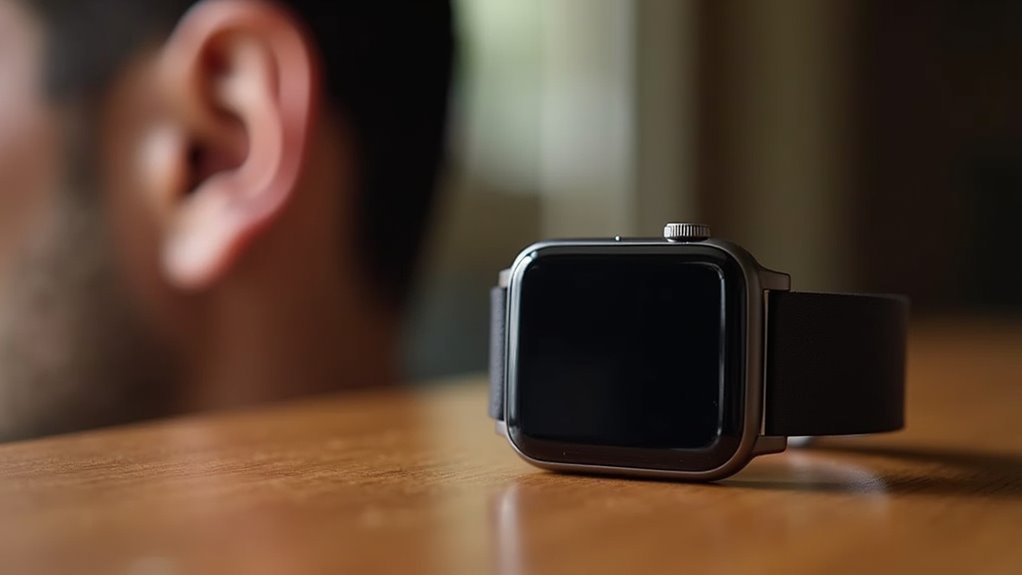
Unlike fingerprints that can be lifted from surfaces or facial features captured in countless photos, your ear’s complex biological architecture creates an impenetrable security barrier that’s virtually impossible to replicate or forge.
You’re protected by ear features so intricate and unique that creating fake reproductions becomes nearly impossible. While fraudsters can craft silicone fingerprints or use high-resolution photos to fool facial recognition, your ear’s three-dimensional structure defies simple duplication attempts.
Your ear biometric data also enjoys limited public exposure, unlike facial images scattered across social media platforms. This scarcity makes unauthorized access incredibly difficult. The ear’s reliable outlines remain consistent throughout your entire lifetime, providing unwavering security that doesn’t degrade with age.
When you combine your ear’s irreproducible characteristics with its structural complexity, you’re leveraging a security marker that rivals fingerprint uniqueness while offering superior protection against common spoofing techniques used in modern identity theft.
Liveness Detection Prevents Sophisticated Fraud Attempts
When sophisticated fraudsters attempt to breach your ear biometric security, liveness detection algorithms actively analyze real-time biological indicators to guarantee you’re physically present during authentication.
These advanced systems detect spoofing attempts using photos, videos, masks, or synthetic voice recordings that criminals deploy to trick traditional security measures.
Your ear-based authentication system employs machine learning models trained on massive datasets of genuine and spoofed samples. The technology monitors subtle environmental cues, skin texture variations, and natural movement patterns unique to live interactions.
Key detection capabilities include:
- Real-time pulse and texture analysis in ear-based visual authentication
- Voice trait monitoring for speaking rate, pitch, and cadence variations
- Environmental sound verification from your unique surroundings
- Deepfake detection algorithms that spot AI-generated audio spoofs
This multi-layered approach dramatically reduces false acceptance rates while adapting to emerging threats. Rather than operating in isolation, liveness detection functions most effectively as part of a comprehensive identity verification system that enhances existing security protocols.
Seamless Integration With Smartwatch Hardware Systems
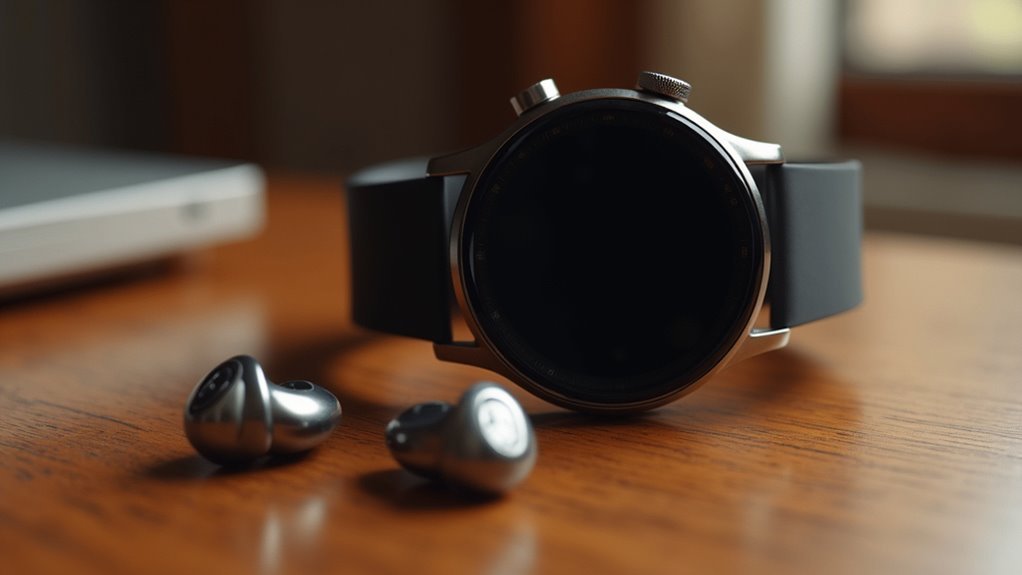
As your smartwatch becomes the central hub for health monitoring, ear biometric sensors establish direct communication protocols that eliminate the traditional barriers between wearable devices. You’ll experience real-time data exchange between your ear-worn sensors and smartwatch through advanced IoT connectivity, creating a unified ecosystem that monitors essential signs with medical-grade accuracy.
| Integration Feature | Benefit |
|---|---|
| Multi-Device Sync | Seamless data flow across all wearables |
| Real-Time Monitoring | Instant health metric updates |
| Unified Interface | Single dashboard for thorough data |
| Enhanced Sensors | Improved accuracy through ear-based positioning |
| Centralized Storage | Complete health history in one location |
You’ll access everything through one interface while your ear sensors provide more accurate measurements due to their proximity to critical blood vessels, revolutionizing how you monitor your health. The Second Bend positioning of these ear-based sensors offers unparalleled precision by targeting the optimal location near the brain and major blood supplies for consistent data collection.
Acoustic-Based Authentication Through Ear Canal Recognition
Your ear canal’s unique acoustic signature creates an invisible fingerprint that’s nearly impossible to replicate.
When you wear specially equipped earbuds, they emit inaudible high-frequency sound waves that bounce off your ear canal’s distinctive geometry, creating a personalized authentication pattern.
This real-time verification process happens continuously while you’re wearing the device, providing seamless security without interrupting your activities. Unlike conventional biometric systems that require specialized scanners, this technology enables anytime, anywhere authentication even when wearing protective equipment like gloves and masks.
Unique Ear Canal Signatures
Each person’s ear canal possesses acoustic characteristics as unique as their fingerprints, creating distinctive sonic signatures that can’t be replicated.
Your ear canal’s complex internal geometry produces characteristic echo patterns when high-frequency sounds bounce off its walls. This intricate three-dimensional structure forms a biological blueprint that’s yours alone.
The authentication process captures these signatures through sophisticated acoustic analysis:
- Inaudible frequency probing – Sounds between 18-48 kHz map your ear canal without disturbing your listening experience
- Echo pattern analysis – Reflected signals reveal your ear’s unique internal architecture
- Robust identification markers – Complex geometric features create multiple verification points
- Passive data collection – Your acoustic signature gets captured naturally while you wear earbuds
This biological uniqueness transforms ordinary earbuds into powerful security devices that recognize you instantly. The technology enables hands-free authentication while maintaining security during active work or movement.
Sound Wave Authentication Methods
Sound wave authentication transforms these unique acoustic fingerprints into practical security systems through precise measurement techniques.
When you wear earbuds, they emit test sounds directly into your ear canal. The reflected sound waves map your canal’s shape, measuring its unique internal geometry with remarkable precision.
Your earbud-type device assesses content-free acoustic features for authentication, creating a non-invasive identification method that works anytime, anywhere. Unlike traditional biometrics, you won’t face issues with gloves, masks, or protective gear blocking access. The system requires minimal interaction from you while providing continuous background authentication.
This live, internal physical response resists common spoofing attacks that target external biometrics. Event detection algorithms filter out background and motion noise, ensuring your authentication remains accurate even in challenging environments. The technology maintains consistent performance across different sound pressure levels and environmental conditions.
Real-Time Identity Verification
How quickly can ear canal authentication verify your identity?
You’ll experience instant verification as the earbud-type device measures reflected sound patterns inside your ear canal. This real-time process happens seamlessly while you’re already wearing your earbuds, eliminating additional authentication steps.
Your ear canal’s unique acoustic signature gets processed immediately, making it perfect for secure communication and access control systems.
Unlike other biometric methods that require specific positioning or lighting, you can authenticate anywhere, anytime. This technology works effectively even when you’re wearing protective equipment in high-security or dangerous environments.
Key advantages of real-time ear acoustic verification:
- Instant processing – Authentication occurs within seconds of insertion
- Continuous monitoring – Maintains security throughout your session
- Hands-free operation – No additional gestures or actions required
- Universal compatibility – Works effectively with gloves, masks, and in various environments
Contactless Capture Technology Ensures User Comfort
Unlike traditional biometric methods that require physical contact with sensors, ear biometric systems capture identifying data from a distance using digital cameras and advanced imaging technology.
You’ll experience enhanced comfort since there’s no need to touch fingerprint scanners or lean close to iris readers. The contactless nature eliminates hygiene concerns while reducing stress associated with intrusive authentication methods.
You can be passively identified without taking specific actions, as CCTV cameras capture your ear’s unique structural characteristics from afar.
This non-intrusive monitoring doesn’t require your active participation, making the authentication process seamless. The stable structure of your ear after a certain age guarantees reliable identification while maintaining convenience. The uniform color distribution of ears simplifies the analysis process compared to other biometric features.
You’ll find this technology particularly appealing in various settings where user comfort matters.
Privacy-Preserving Authentication Without Facial Recognition Concerns
Beyond comfort considerations, ear biometrics address growing privacy concerns that plague facial recognition systems.
You’re dealing with notably fewer socially sensitive visual cues when your device captures ear data instead of facial features. This reduces identity exposure risks while maintaining robust authentication.
Your biometric data gets processed through privacy-preserving algorithms like triplet-loss neural networks and advanced biohashing techniques.
The system stores transformed templates rather than raw images, making stolen data less valuable to attackers. These cryptographic methods provide additional layers of protection specifically designed for biometric data security.
Key privacy advantages include:
- Data minimization – Ear images contain fewer personally identifiable elements than faces
- Cancellable biometrics – Templates can be revoked and reissued if compromised
- GDPR compliance – Reduced personal data collection meets strict regulatory requirements
- Enhanced user trust – Less intrusive capture increases adoption willingness across demographics
Environmental Robustness Against Masks and Accessories
While facial recognition systems struggle with widespread mask adoption and seasonal accessories, ear biometrics maintain consistent performance across these challenging conditions. Your ear remains visible even when you’re wearing face masks, hats, or hoods, enabling unobtrusive identification without requiring your cooperation.
Deep learning models achieve above 98% accuracy on diverse datasets, even in uncontrolled environments with variable lighting and occlusion. You’ll find that feature extraction techniques like Zernike Moments and Gabor filters capture ear-specific characteristics that resist changes from accessories.
Unlike fingerprint or iris recognition requiring specific hardware and compliance, ear biometrics work passively at a distance. Your wearable devices can continuously authenticate you through smart glasses or headphones without face visibility concerns, making them ideal for post-COVID security applications. The ear’s fixed position provides a stable reference point that simplifies tracking and identification algorithms compared to other biometric features that may shift or change orientation.
Multi-Modal Biometric Enhancement for Comprehensive Security
You’ll strengthen your wearable security system by implementing layered authentication that combines ear biometrics with other modalities like fingerprint or voice recognition.
This diversity creates redundancy that protects you even if one biometric fails or gets compromised by environmental factors.
You’ll achieve markedly higher accuracy through cross-verification, where multiple biometric readings confirm your identity simultaneously rather than relying on a single data point. These multimodal approaches also enhance inclusivity by accommodating users who may have difficulty with single-mode biometric systems due to physical limitations or accessibility needs.
Layered Authentication Systems
As security threats evolve in complexity, your wearable devices can’t rely on single authentication methods to protect sensitive data effectively.
Layered authentication systems combine multiple verification methods, creating robust defense mechanisms that adapt to modern security challenges. When you integrate ear biometrics with existing modalities like fingerprint scanning and facial recognition, you’re building thorough security frameworks that resist impersonation attacks.
Your wearable’s layered approach offers several advantages:
- Continuous verification through PPG-based biometrics maintains authentication throughout device usage
- Multi-modal resistance against sophisticated attacks requiring multiple compromised identifiers
- Behavioral pattern recognition captures unique user habits for ongoing verification
- Seamless data transfer between devices using secure APIs without manual intervention
This multi-layered strategy guarantees that even if one authentication factor fails, your remaining security layers maintain protection. The implementation of Privacy by Design principles ensures ethical development of biometric technologies while maintaining user trust and regulatory compliance.
Redundancy Through Diversity
Because attackers continuously develop new spoofing techniques, your wearable devices need multiple biometric checkpoints working in tandem to maintain security integrity.
Multi-modal biometrics combines ear recognition with facial, fingerprint, and voice authentication to create redundant security layers that greatly increase spoofing difficulty.
You’ll benefit from enhanced user convenience since you can choose your preferred authentication method based on environmental conditions. When facial recognition fails in low light, ear biometrics seamlessly takes over. This diversity guarantees consistent access while maintaining robust security.
Your system becomes considerably more resilient against impersonation attempts since attackers must simultaneously compromise multiple biometric modalities. Advanced key generation techniques can extract cryptographic keys from these combined biometric modalities to strengthen overall system protection.
The integration of diverse biometric data creates thorough user profiling, improving accuracy while providing adaptability across various situations and environments.
Cross-Verification Accuracy Boost
When your wearable security system combines multiple biometric modalities, cross-verification dramatically amplifies identification accuracy beyond what any single method can achieve.
You’ll experience remarkable precision when dual ear identification reaches 100% accuracy in controlled environments, compared to 88.3% for single ear detection.
Your system benefits from sophisticated fusion techniques that boost recognition rates between 92.06% and 95.93%. These methods utilize:
- Principal Component Analysis highlighting ear helix curves as primary identification markers
- Standardized measurement protocols with digital reversing for consistency
- Thirteen-component algorithms captured three times by different investigators
- Dimensionality reduction through PCA and Independent Component Analysis
You’ll find these fused systems maintain robust performance despite environmental variations like lighting changes or image obstructions, making them ideal for real-world wearable security applications. The ear structure’s stability until age 70 ensures consistent biometric performance across decades of use without requiring frequent system recalibration.
Advanced 3D Point Cloud Technology for Precise Recognition
While traditional 2D imaging captures only surface-level ear features, 3D point cloud technology revolutionizes ear biometrics by recording precise spatial coordinates that map every contour, ridge, and fold of your ear’s unique geometry.
You’ll benefit from enhanced reliability since 3D data isn’t affected by lighting conditions or pose variations that often compromise 2D systems. The technology extracts both global descriptors analyzing your ear’s overall structure and local features focusing on minute details like curls and ridges.
Registration algorithms align point clouds from different captures, dramatically improving matching accuracy. These registration-based techniques work alongside feature-based recognition methods to create comprehensive identification systems.
You’re also protected against spoofing attempts because 3D templates’ complexity and dimensionality make duplication nearly impossible, ensuring robust security for your wearable devices.
Real-Time Identity Verification in Wearable Ecosystems
As wearable ecosystems evolve beyond simple fitness tracking, they’re transforming into sophisticated identity verification platforms that authenticate your identity in milliseconds through seamless biometric integration.
Your smartwatch or AR glasses now combine multiple verification methods to create an impenetrable security layer. When you approach a secure terminal, your wearable instantly processes biometric data through advanced sensors, eliminating traditional passwords and PINs.
Key advantages of real-time verification in wearables include:
- Multi-modal authentication – Combines fingerprint, facial recognition, and heart rate patterns for stronger security
- Contactless NFC integration – Enables proximity-based verification without physical contact
- Enhanced privacy protection – Requires your biometric input to prevent unauthorized access
- Industry-wide adoption – Deployed across finance, healthcare, and government sectors
This hands-free approach accelerates identification processes while maintaining robust security standards across various applications. Modern wearable verification systems support identity authentication in over 195 countries, ensuring global compatibility for users traveling or conducting international transactions.
Continuous Passive Authentication During Device Usage
You don’t need to repeatedly unfasten your earbuds or smart hearing aids when continuous passive authentication monitors your unique ear biometrics in the background.
This always-on identity verification system constantly analyzes your ear’s distinctive acoustic properties and physiological patterns while you’re using the device. The system employs machine learning algorithms to process these biometric signals in real-time for accurate user identification.
The frictionless monitoring happens seamlessly during normal usage, ensuring you’re the authorized user without any interruption to your experience.
Always-On Identity Verification
When you’re using your wearable device throughout the day, always-on identity verification works behind the scenes to continuously confirm you’re the authorized user without interrupting your activities.
This technology leverages your unique physiological patterns to enhance security without adding burden to your experience.
Your device collects biometric data like heart rate, breathing patterns, and gait to create a continuous authentication profile:
- Seamless verification – No need for frequent password entries or manual logins
- Multi-biometric accuracy – Combines ear biometrics with heart rate and movement data for higher precision
- Real-time protection – Instantly detects unauthorized access attempts during device usage
- Enhanced user experience – Maintains security while preserving natural device interaction
This approach transforms wearable security by making authentication invisible yet robust. The continuous monitoring of physiological patterns enables comprehensive health and lifestyle analysis beyond just security verification.
Frictionless Background Monitoring
Background monitoring transforms your wearable’s security approach by eliminating the friction between protection and daily use. Your ear-worn device continuously authenticates your identity through biometric data collection without interrupting your activities.
Smart sensors monitor heart rate, skin conductivity, and other physiological markers while you’re wearing the device, creating seamless verification.
You’ll experience enhanced convenience as the system eliminates repeated manual logins, boosting your productivity. The technology adapts to changes in your behavior patterns over time, improving both security and user experience through machine learning algorithms. These systems employ data analytics to provide personalized recommendations that support healthier lifestyle choices.
However, you’ll face challenges including data privacy concerns from continuous monitoring and technical complexity in implementation.
User acceptance remains critical, as some hesitate due to privacy worries or unfamiliarity with the technology.
Future Applications in Law Enforcement and Medical Research
As ear biometric technology matures beyond basic authentication, you’ll see it revolutionize how law enforcement identifies suspects and how medical researchers track patients over time.
Police departments can now identify individuals from a distance, even when they’re wearing masks or protective gear that obscures facial features. You’ll benefit from faster suspect verification through mobile devices that transmit ear biometric data to criminal databases in under a minute. However, privacy concerns arise when collecting biometric data without individual knowledge or consent, similar to challenges faced with facial recognition technology.
In medical research, you’ll find ear biometrics invaluable for longitudinal studies since ear shape remains stable despite aging or facial expressions.
- Remote identification capabilities penetrate protective gear and obscured environments
- Multi-modal systems combine ear recognition with facial biometrics for enhanced accuracy
- 3D ear imaging enables automated genetic and anthropological research analysis
- Acoustic authentication secures communication devices during covert operations
Frequently Asked Questions
How Much Does Ear Biometric Technology Add to Wearable Device Costs?
You’ll pay considerably more for ear biometric technology in wearables. Current advanced ear biometrics exceed typical $99 headset prices, with consumer devices targeting affordability but remaining costlier than mass-market alternatives today.
Can Ear Biometrics Work Effectively With Different Earphone and Headset Brands?
You’ll find ear biometrics work seamlessly across different earphone and headset brands through universal standards and cross-platform compatibility. Manufacturers collaborate to guarantee acoustic and visual authentication methods integrate effectively with various devices.
What Happens if Users Have Ear Infections or Temporary Ear Damage?
You’ll experience reduced accuracy when you have ear infections or temporary damage. Your biometric system can’t recognize your ear’s altered shape, so you’ll need backup authentication methods until you’re healed.
How Long Does Ear Biometric Enrollment and Setup Take for Users?
You’ll need multiple wearing sessions for ideal enrollment, with each session requiring just a brief earpiece insertion. Your accuracy improves dramatically from 40% to 90% when you complete 11 sessions.
Are There Any Cultural or Religious Concerns With Ear Biometric Scanning?
You’ll find ear biometric scanning generally avoids major cultural or religious concerns since it’s non-invasive and doesn’t require removing headwear, touching faces, or exposing typically covered body parts during authentication.
In Summary
You’ll witness ear biometrics revolutionize wearable security through their unique anatomical precision and anti-fraud capabilities. Your smartwatch won’t just verify your identity once—it’ll continuously authenticate you passively while you’re wearing it. You can’t replicate ear structures, making spoofing nearly impossible. As this technology advances, you’ll see applications expand beyond personal devices into law enforcement and medical fields, fundamentally changing how you’ll interact with secure wearable ecosystems forever.

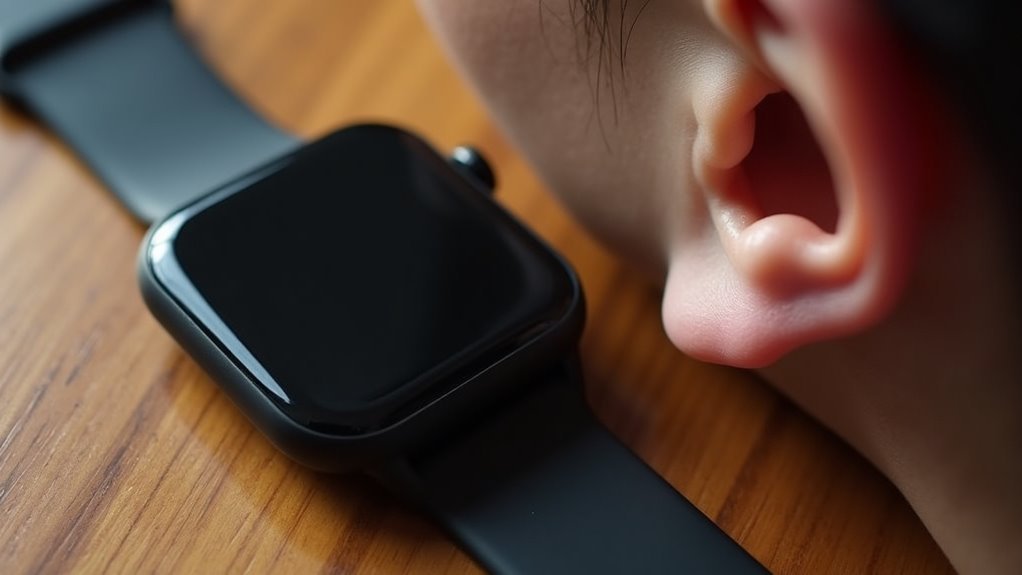
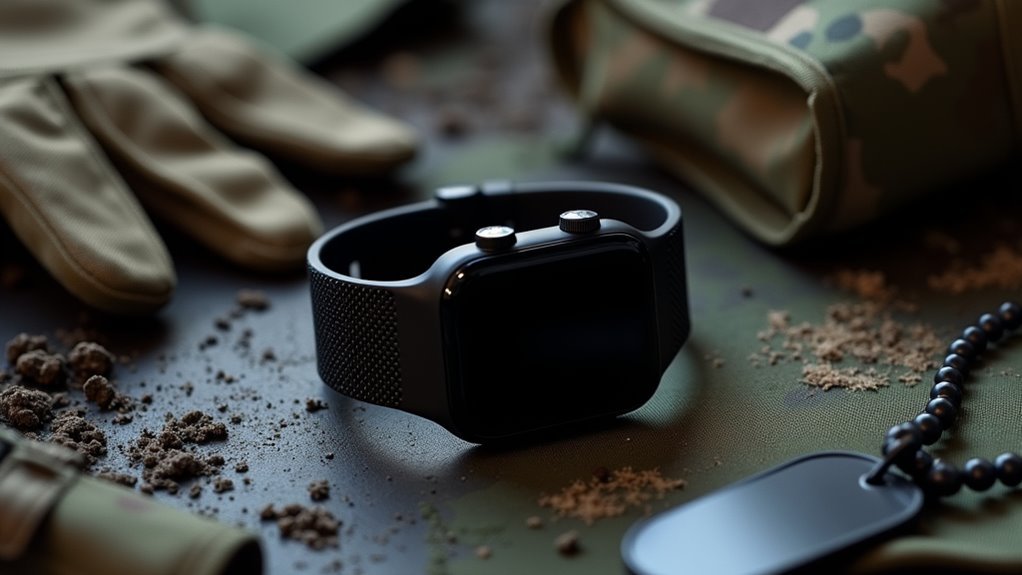
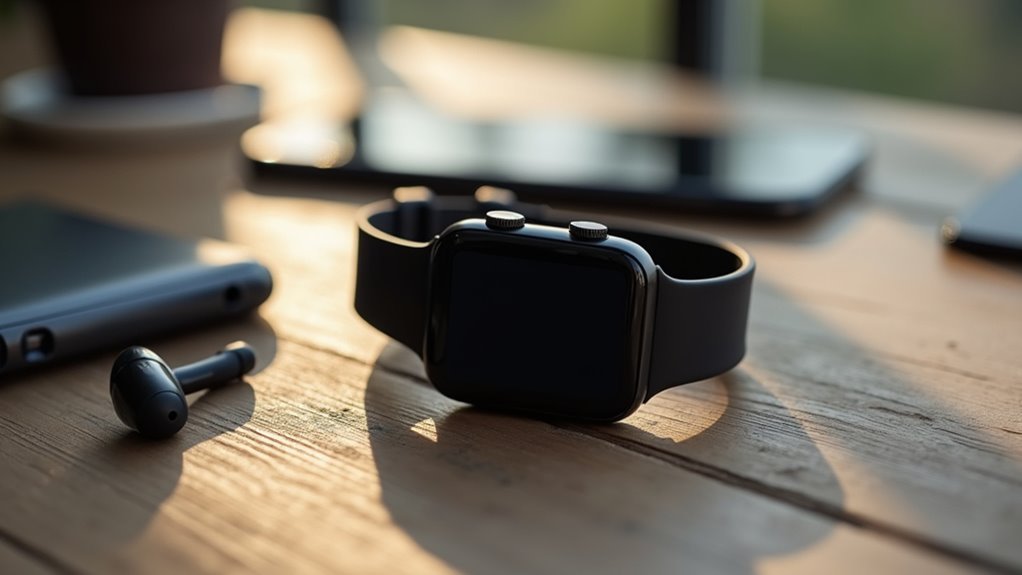
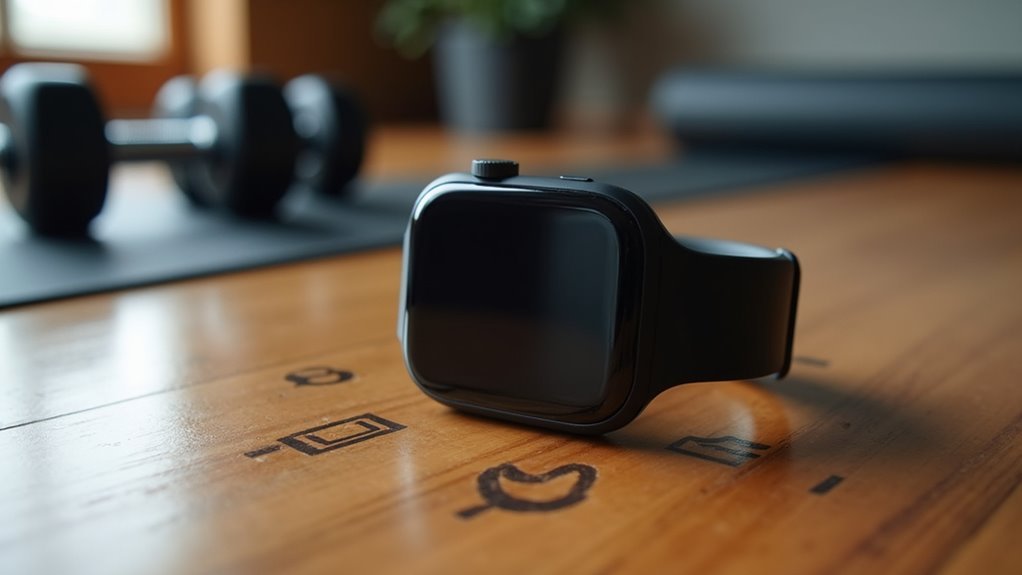
Leave a Reply